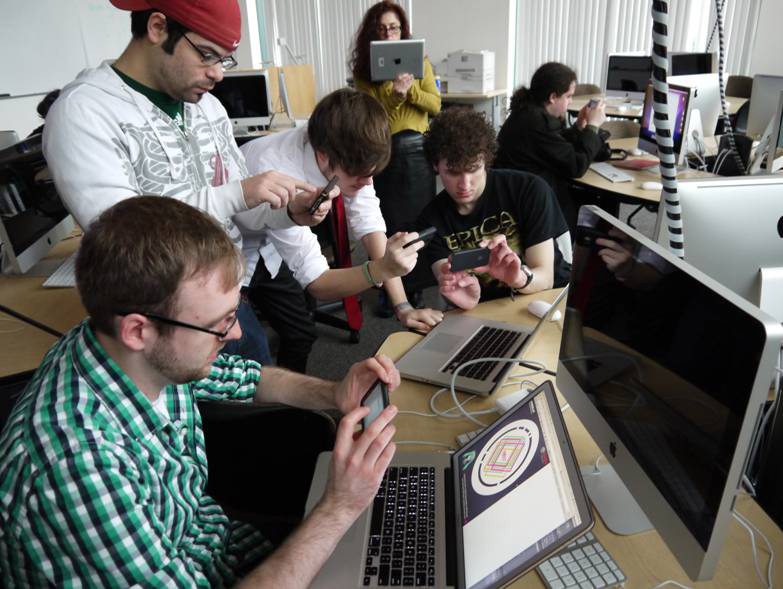WSUV students create OMSI exhibit. An occasional series.
On the Web: Autovation.
This meeting about the planned “Autovation” exhibit at Oregon Museum of Science and Industry, to be created by a dozen students from Washington State University Vancouver, would be anything but digital daydreaming.
The second-floor meeting room at OMSI in Portland provided a visual cue that this would be no blue sky session: its windows facing the sparkling Willamette River were so low on the concrete wall that meeting participants could see only water, with no view of the morning’s sunny sky.
The task at this late February gathering was to establish a timeline for the WSUV students to complete work on “Autovation,” a new permanent exhibit that will educate museum visitors about the hidden wonders of automobile technology. The students, all participants in the university’s Creative Media and Digital Culture program, have worked since December on the huge project.
But their time runs out in May. That’s when the school semester ends — and both OMSI and Dick Hannah Dealerships, which is based in Vancouver and is funding the project, want the exhibit open on the busy Memorial Day weekend.
“Tick. Tick. Tick,” said OMSI exhibit developer Katura Reynolds at one point during the meeting.
Denny Andersen, OMSI’s project manager for Autovation, was more specific and more blunt. The logistics of installing the exhibit are daunting, he explained to the students and their faculty advisors. They involve moving an automobile frame, called a unibody, through tight doorways into the relatively packed Turbine Hall. An exhibit called the Earthquake House might need to be moved out of the way, Andersen explained. The entire setup will need to be done in a single day — a Monday, when the museum is closed to the public.
“It’s going to be a real crunch to get something that big into the room,” Andersen said,
But there’s plenty to do before moving day. Right now, Hannah Collision Center manager Rick Stoker is looking for a unibody frame worthy of display for many years. Students need to work with other Hannah employees to create an eye-catching vinyl wrap to create the image of a vehicle on the unibody frame. Back at the museum, OMSI workers must build display mounts for the digital tablets that will display the “augmented reality’ of the display vehicle’s inner workings.
And when everything starts to come together, students will need to test whether their recognition software will read data embedded in the car under the museum’s lighting conditions.
The smartphone scanners that students are using in project development worked great in the low-window meeting room. When they arrived for the meeting, they’d posted papers on the wall and encouraged everyone to download a mobile application, or app, onto their smartphones. OMSI staff members and Dick Hannah marketing director Kent VanArnam, went through the necessary finger-fidgets to find the free junaio app, a scaled-down version of the product they’ll use for the exhibit.
Everyone gathered around the papers posted on the wall and, one at a time, pointed their phones at the flat, uninspired drawings. The images leaped out of the phone displays in globe-shaped three dimensions, textured and appealing to the eye. This was the dazzling “augmented reality” effect that the students want to create to take their exhibit to the “wow” level of education and entertainment.
The “wow factor” impressed the OMSI officials. But Mark Patel, OMSI’s vice president of marketing, wondered whether the exhibit could sustain that sense of technological wonder.
“We don’t want something that looks really cool, but when you dive in there isn’t really much there,” he said. The display will need videos, photos, demonstrations of how a vehicle works to really live up to the expectations created by the technology, he said. “For example, Word documents and really cool stuff don’t go together,” he said.
The students, many wearing red “Creative Media and Digital Culture” T-shirts under their jackets, raised questions about how their work intersected with the jobs of OMSI staffers. But Andersen didn’t want to stray far from discussion of deadlines for developing and installing the exhibit. He wants to make sure the project, OMSI’s first major collaboration with both a student group and a major business donor, is a hit when it is put on public display.
“We need to be testing through March.” Andersen said. “We want to fail early, so we can fix it.”




